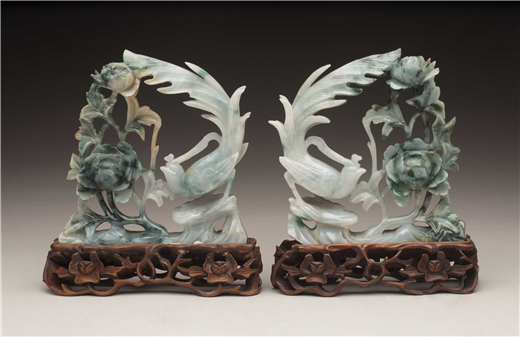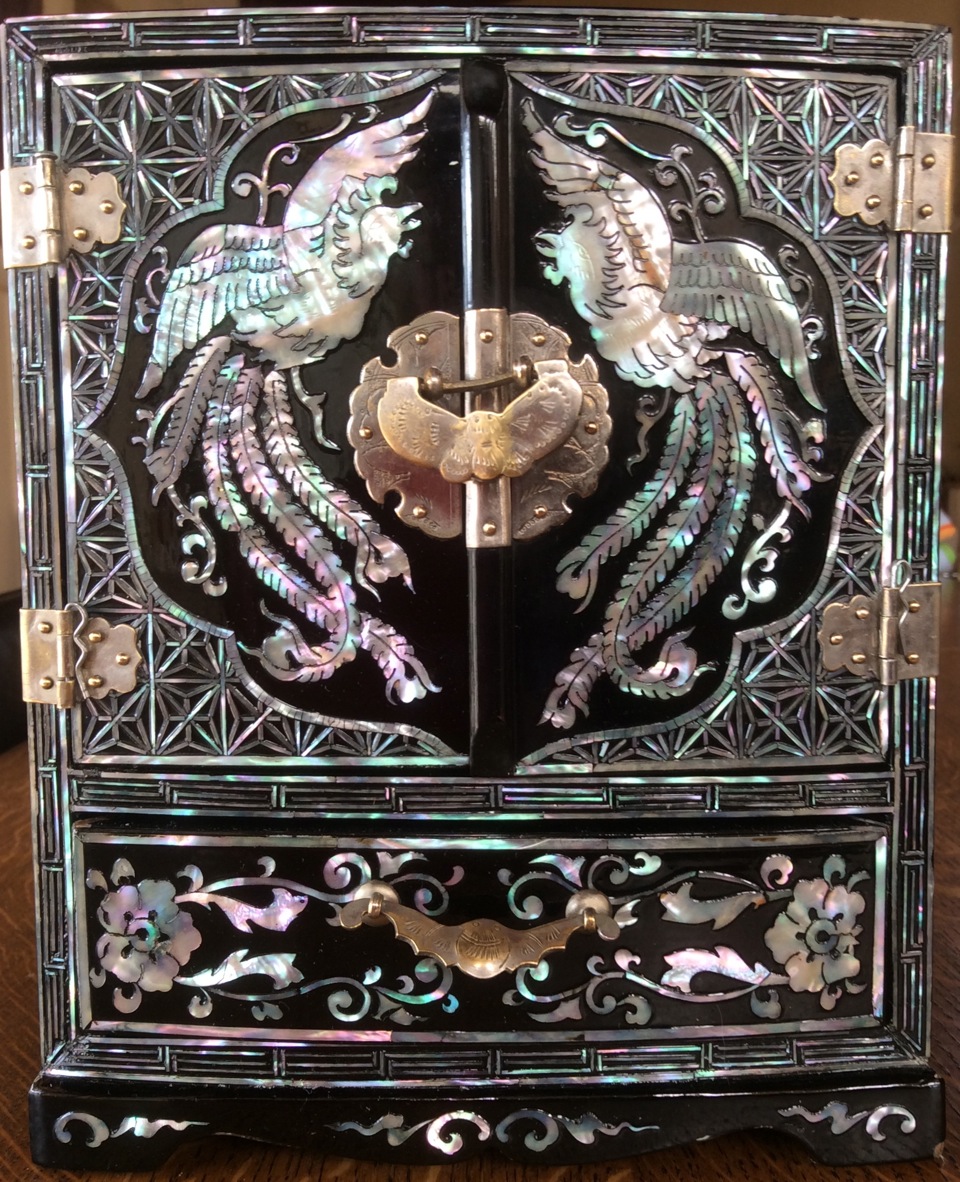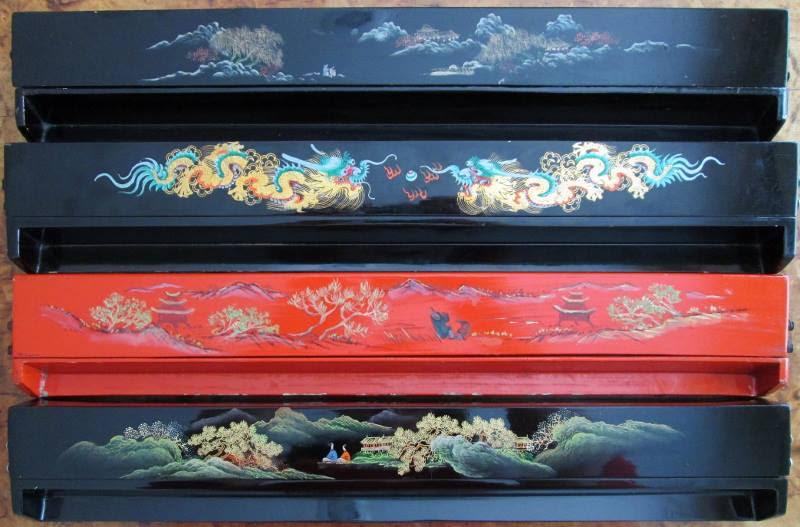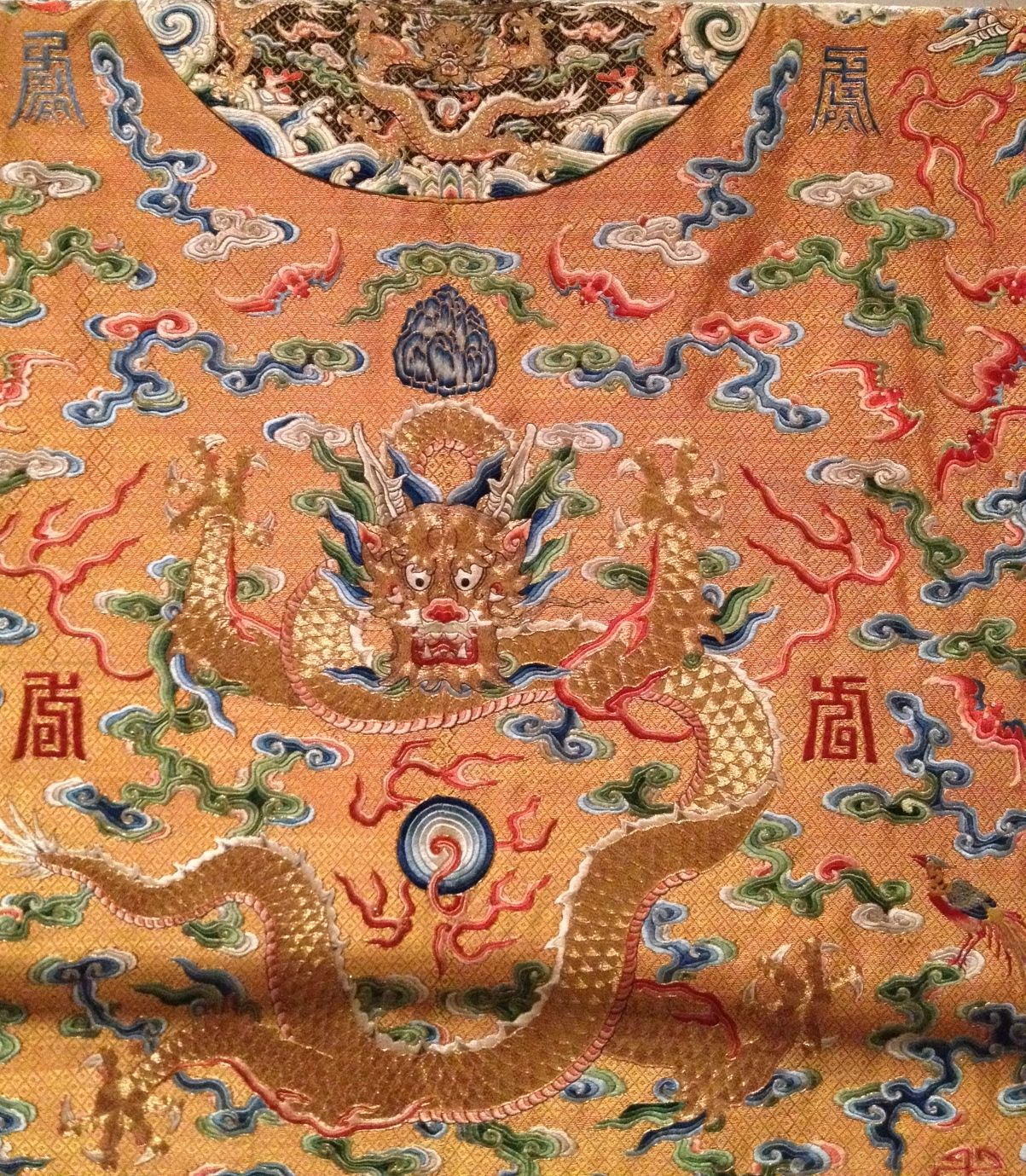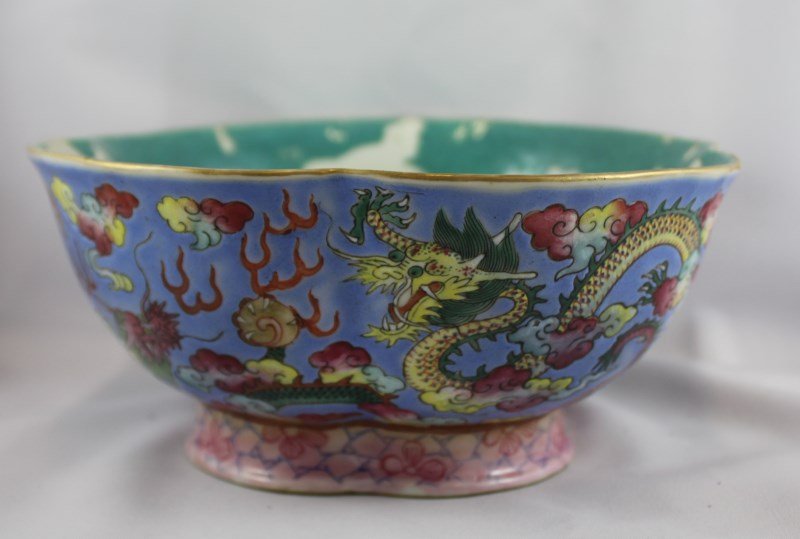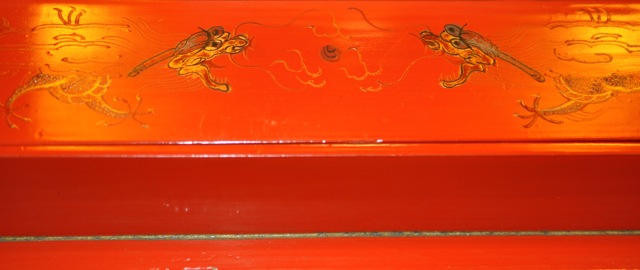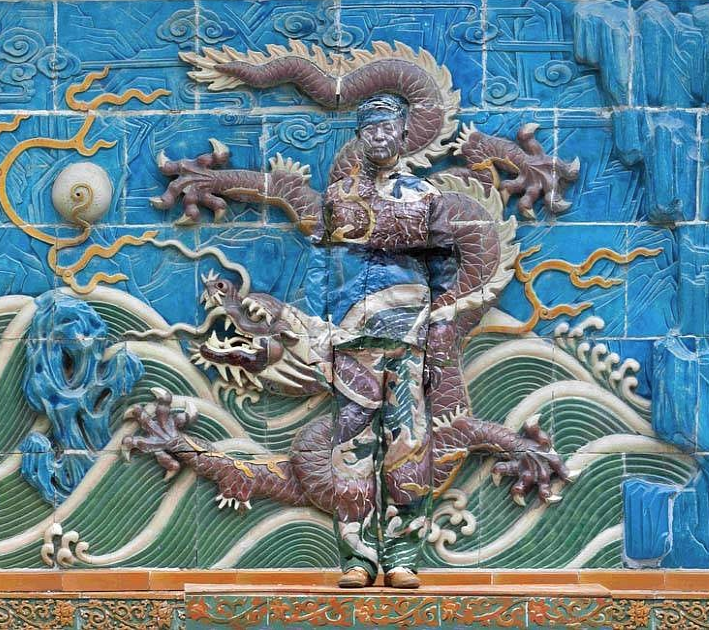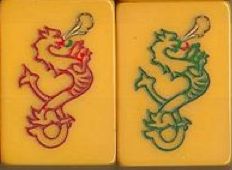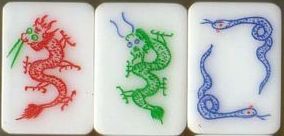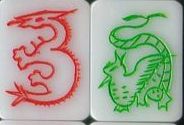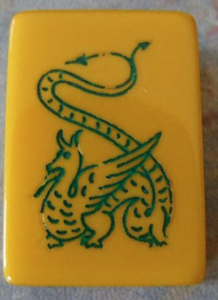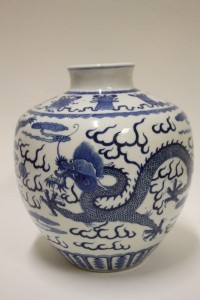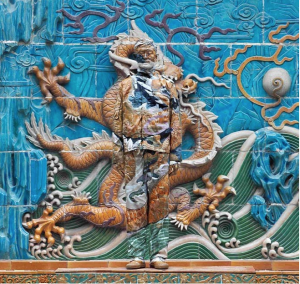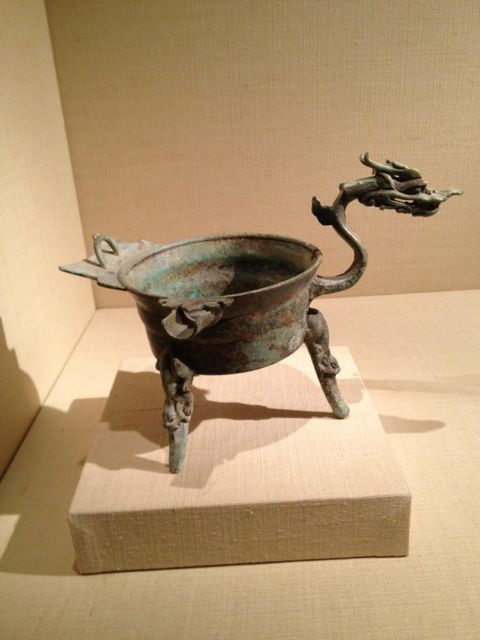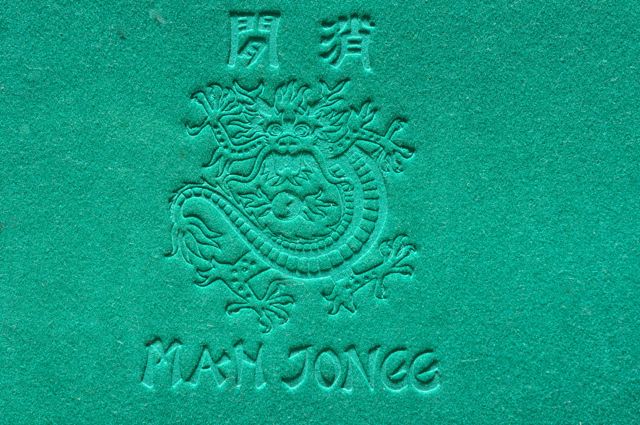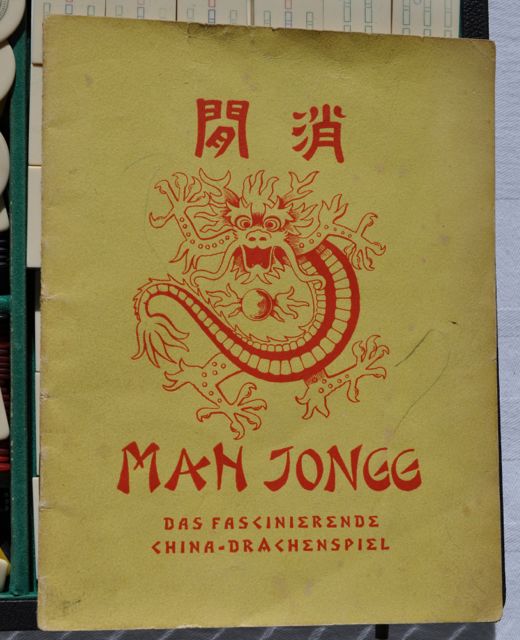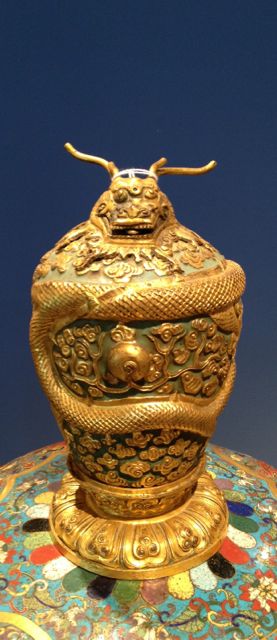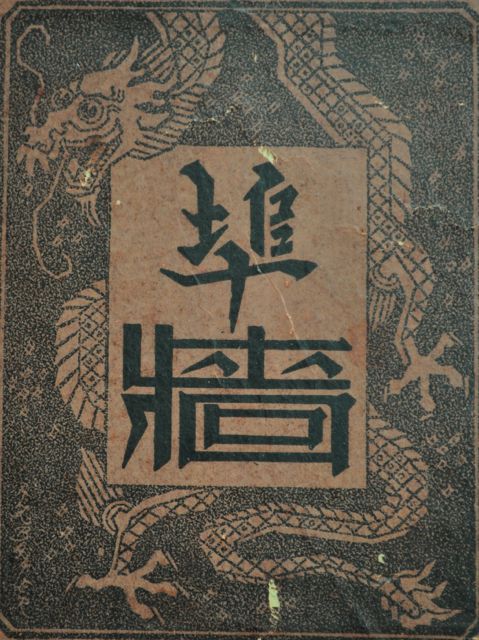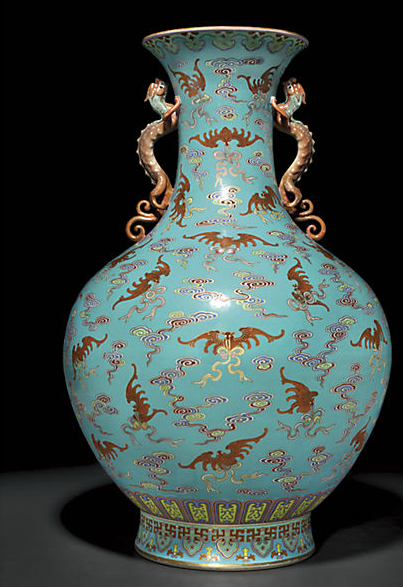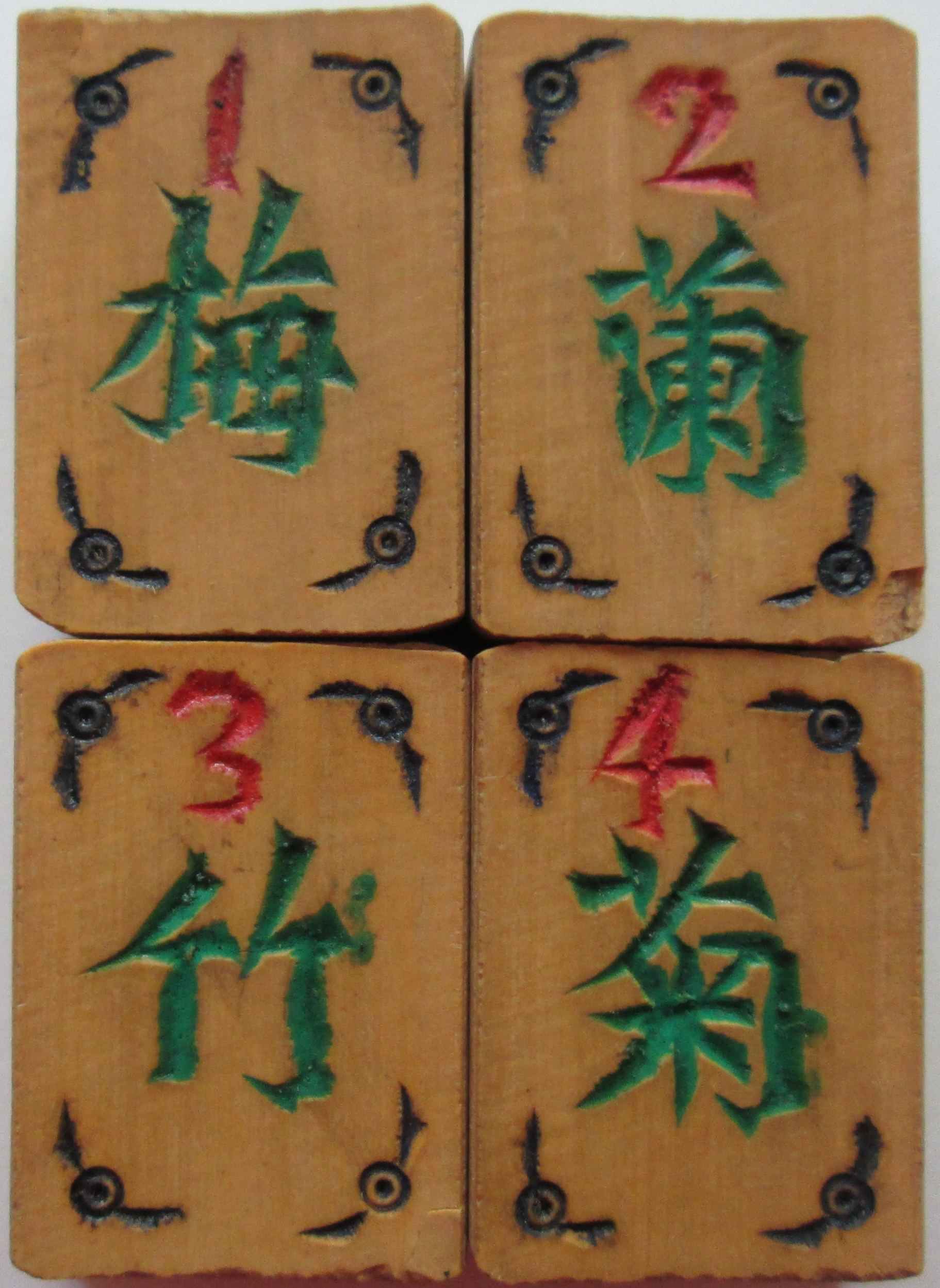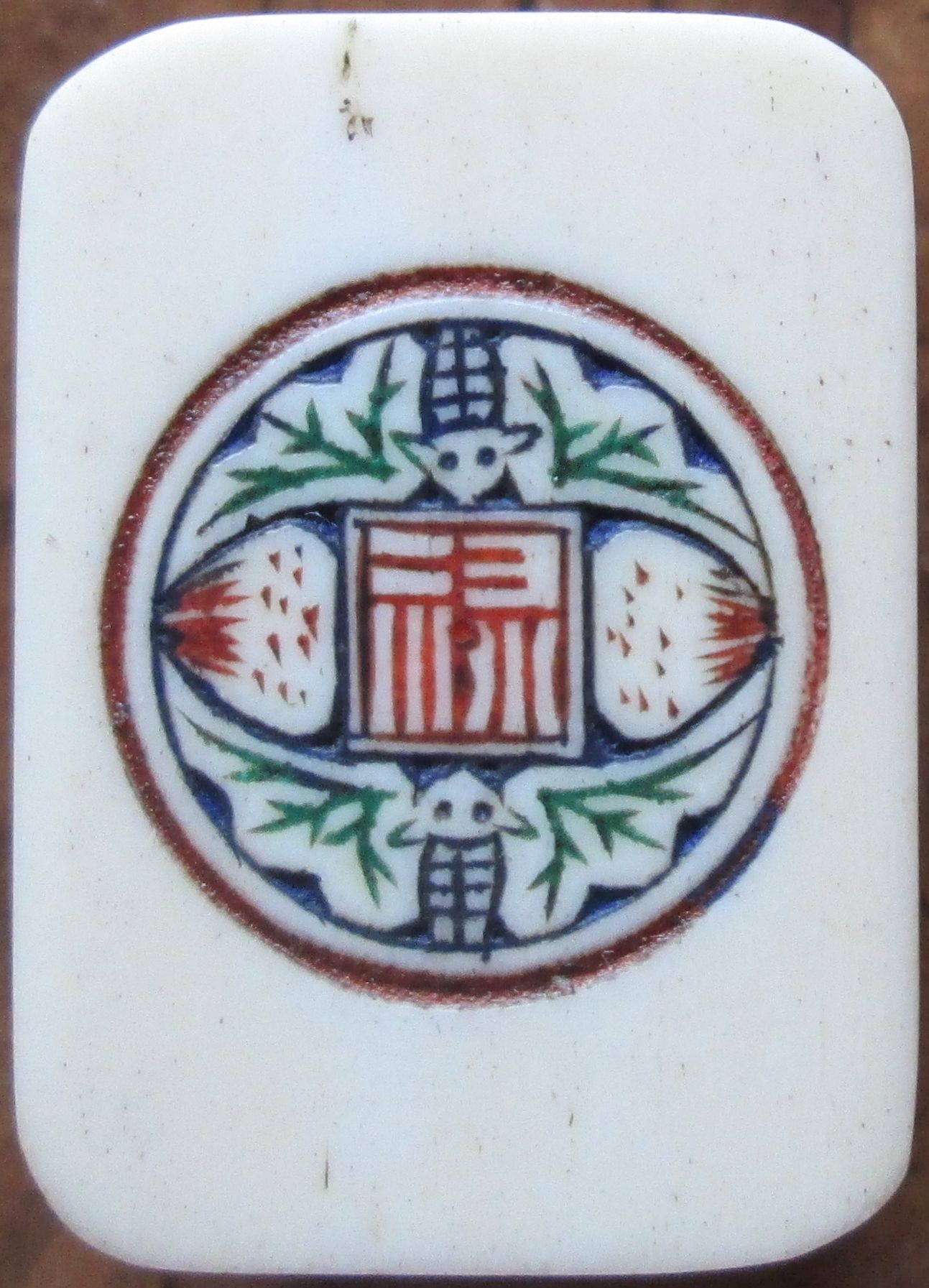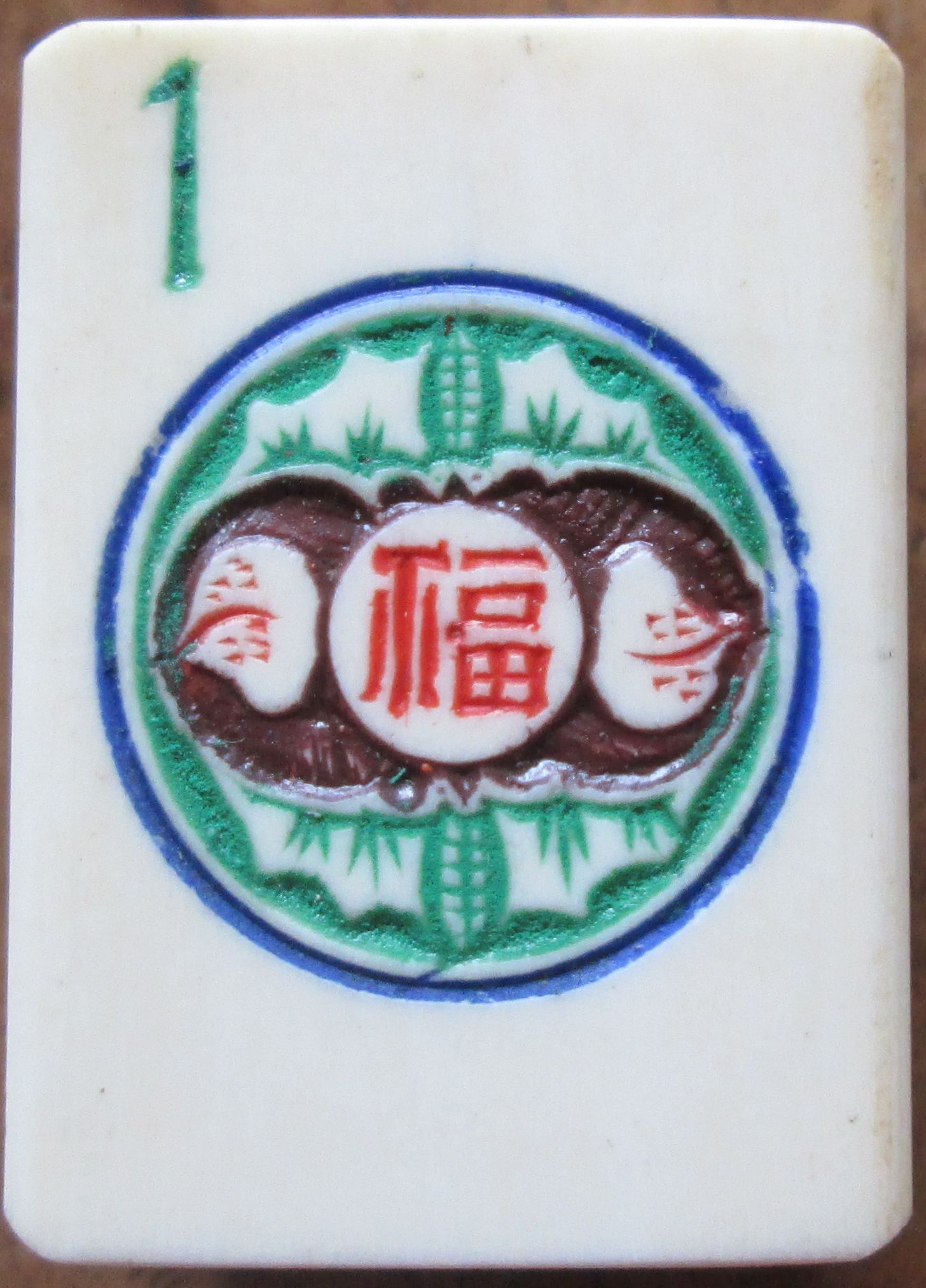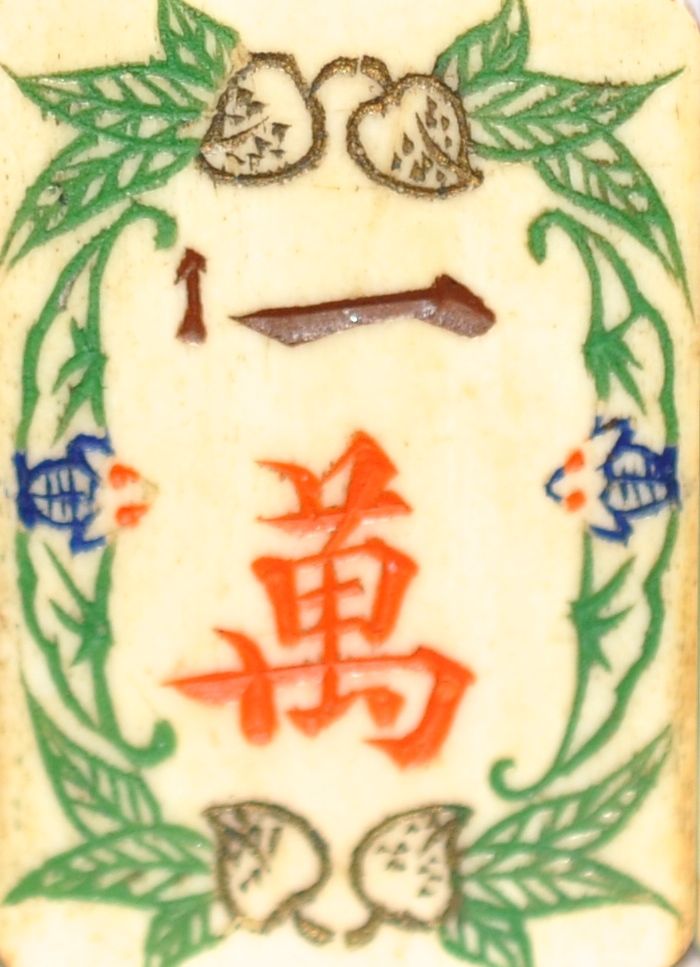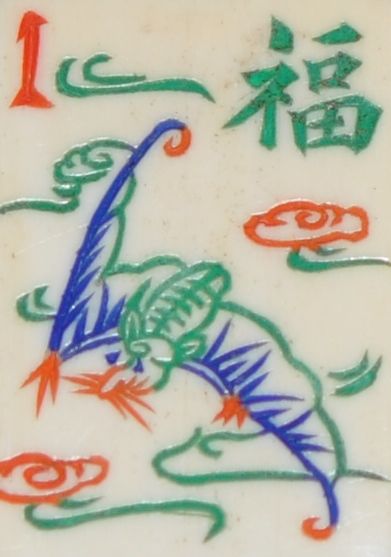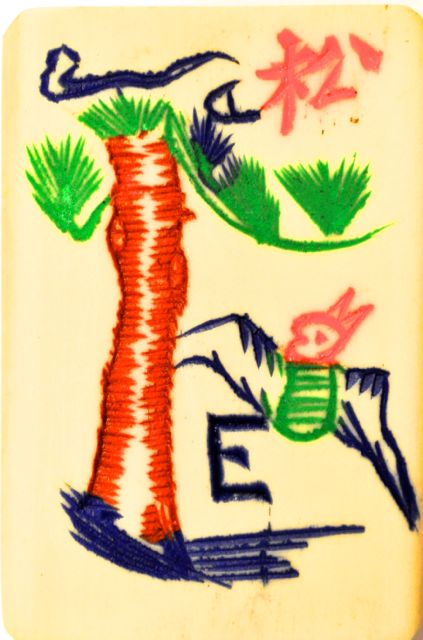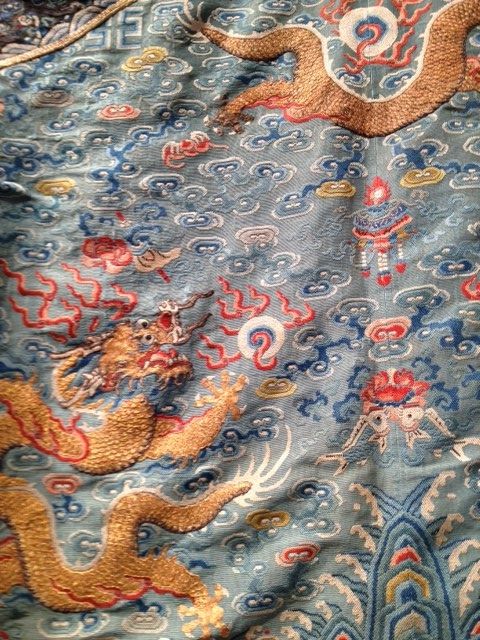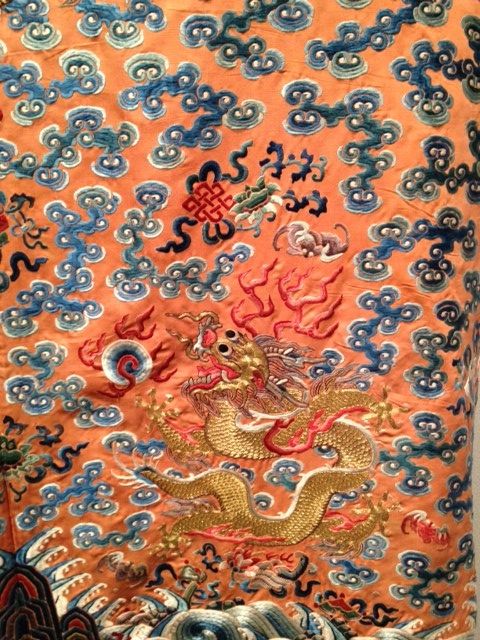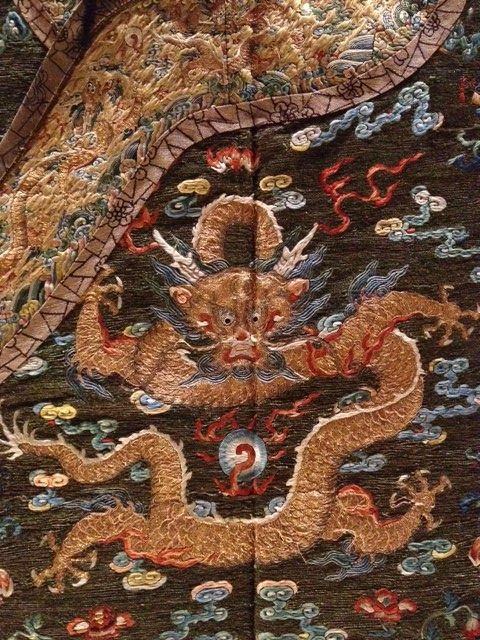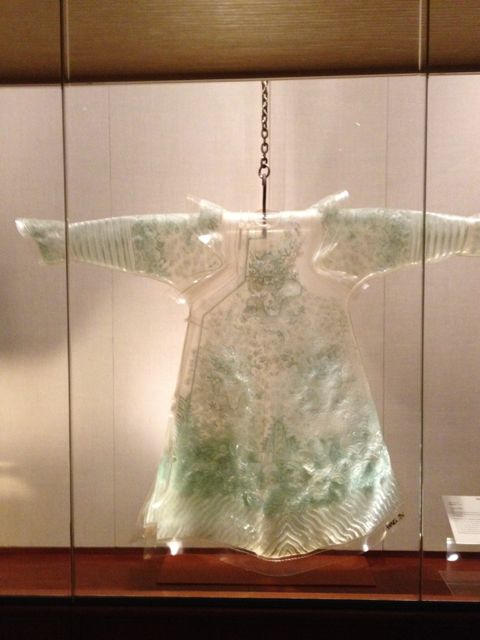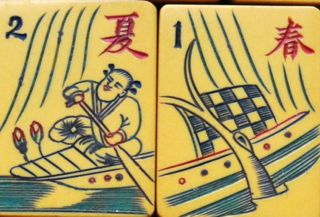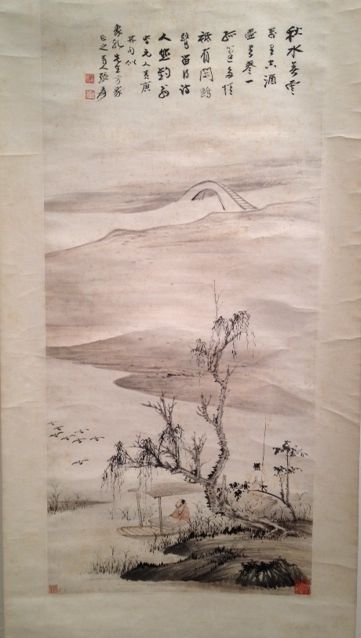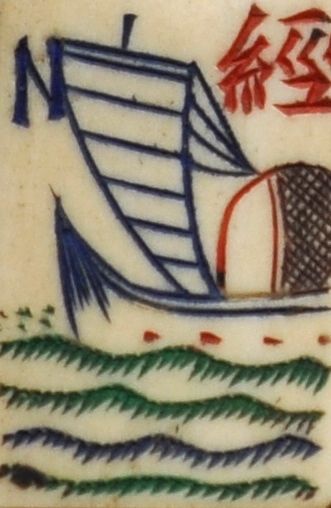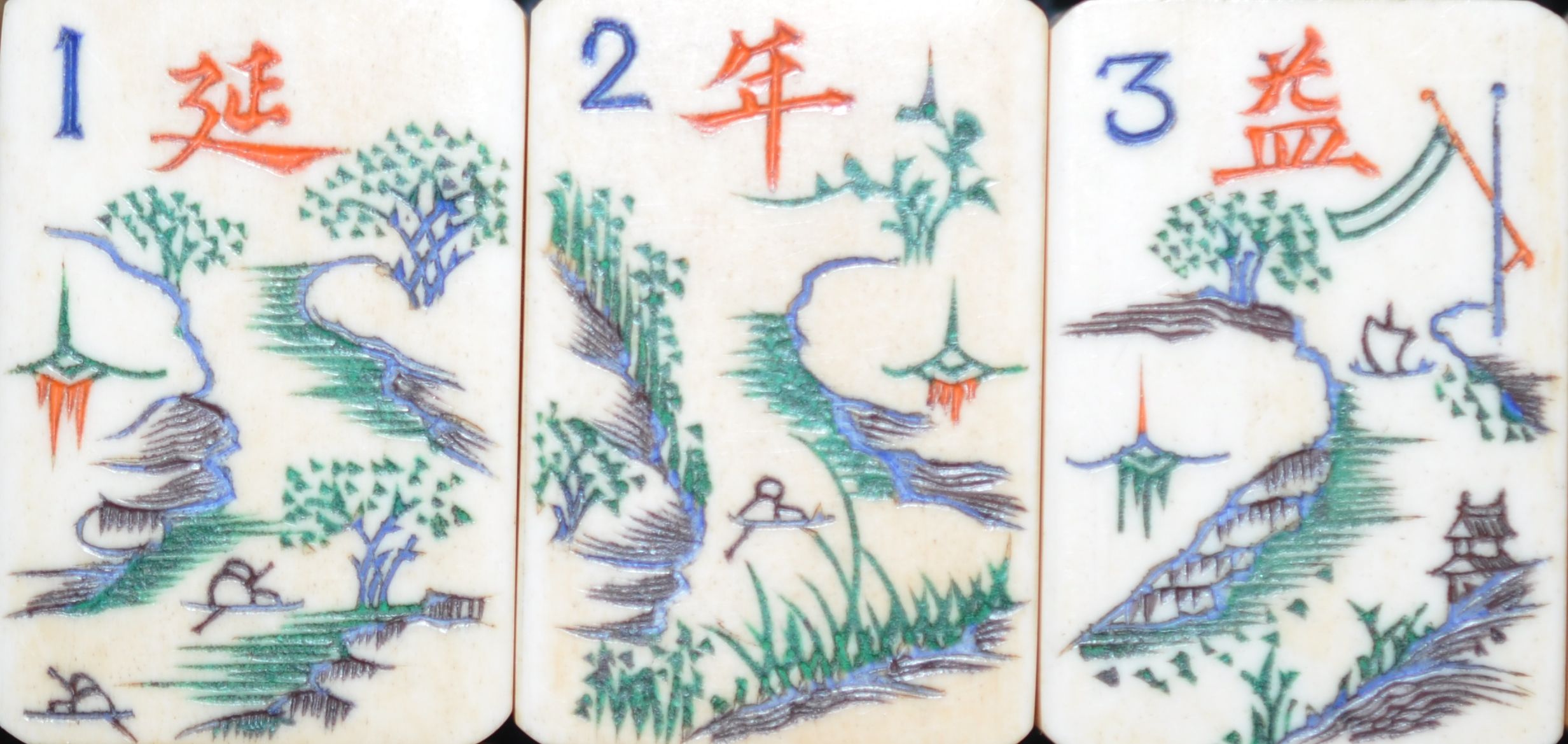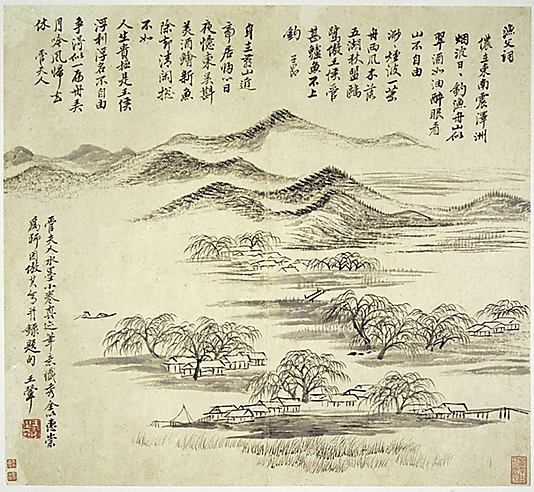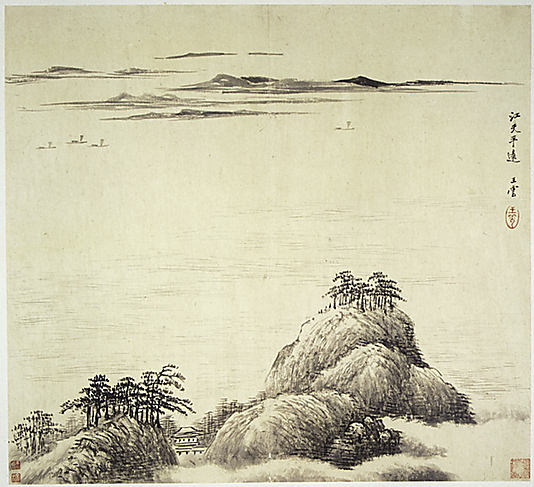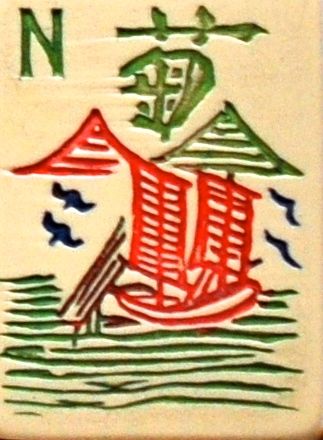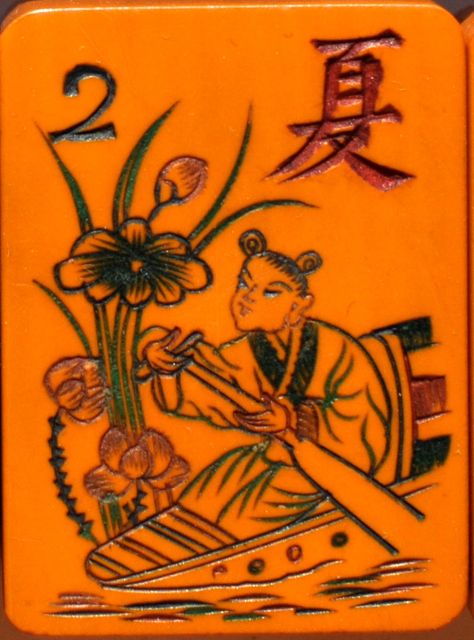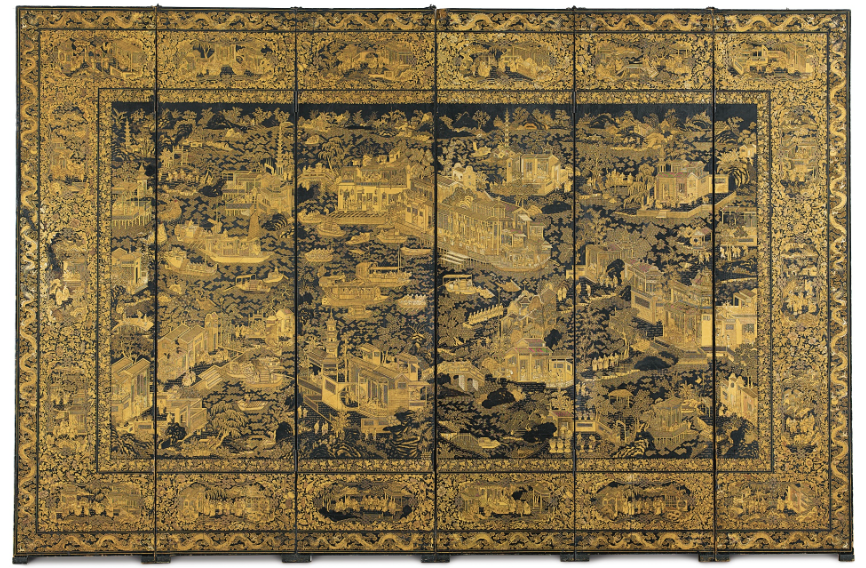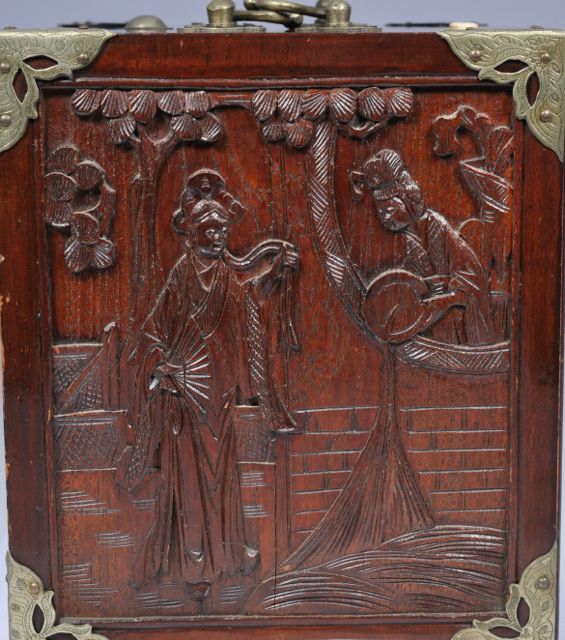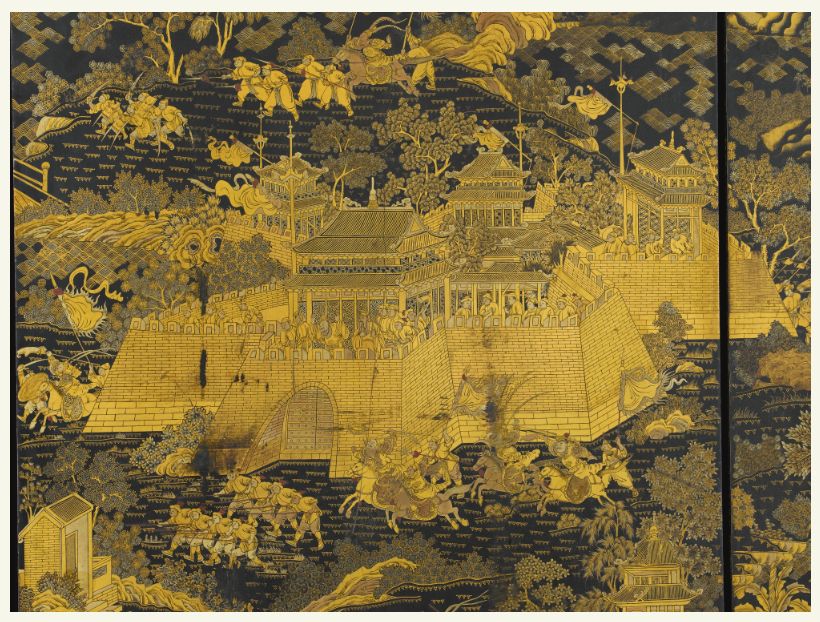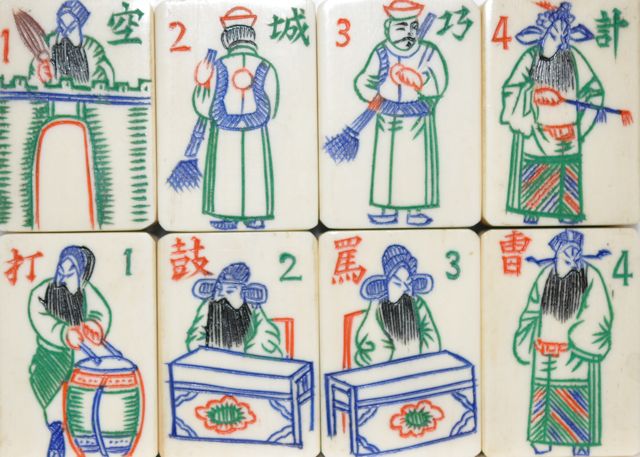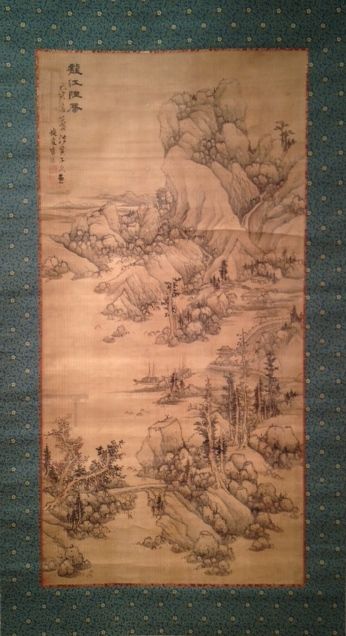The phoenix, which only appears in times of fair and just rulers, is associated with peaceful and happy times. Patricia Bjaaland Welch's book: Chinese Art A Guide to Motifs and Visual Imagery is the source for the art information in this post. She writes the phoenix is known in China as the king of the birds, but its origins are complex. Today the phoenix is considered to be a combination of several creatures: the head of a pheasant, the body of a duck, the legs of a crane, the tail feathers of a peacock, the mouth of a parrot and the wings of a sparrow. The female phoenix has a tail with two feathers, and the male has one with five feathers. When a phoenix is paired with another mythological creature, a dragon, the phoenix automatically becomes the female partner.
Most of you are familiar with this symbol that appears on the early sets made by the Mah-Jongg Sales Company of America, that was discussed earlier on this blog. It was simply the Chinese Character for the male phoenix.
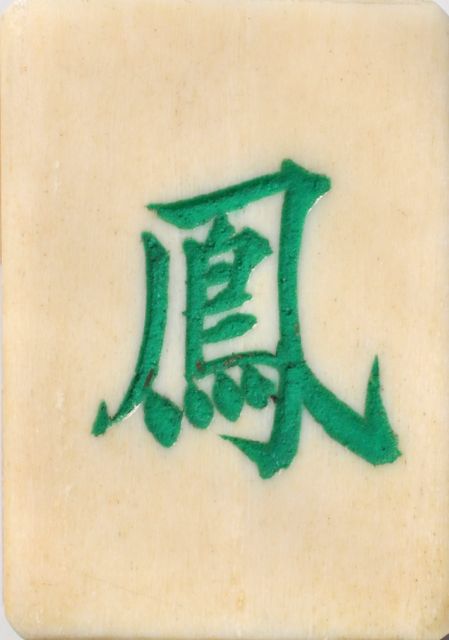
Nowadays we call it the Green Dragon, and many of today's players are unaware of this different character that served as the Green at the beginning of the Mahjong craze.
In the earliest days of Chinese art, the phoenix was shown as a striding creature with outstretched wings, up until close to 600 AD, perhaps a bit of a version of this One Bam, though of course this one does not have outstretched wings:
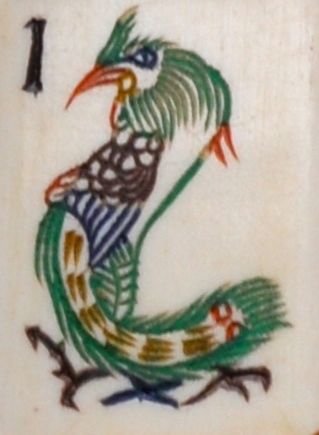
The jaunty attitude of this bird is enchanting.
The next Chinese Bakelite One Bam features another phoenix, posing with leg raised in a similar way to what we often see with peacock One Bams.
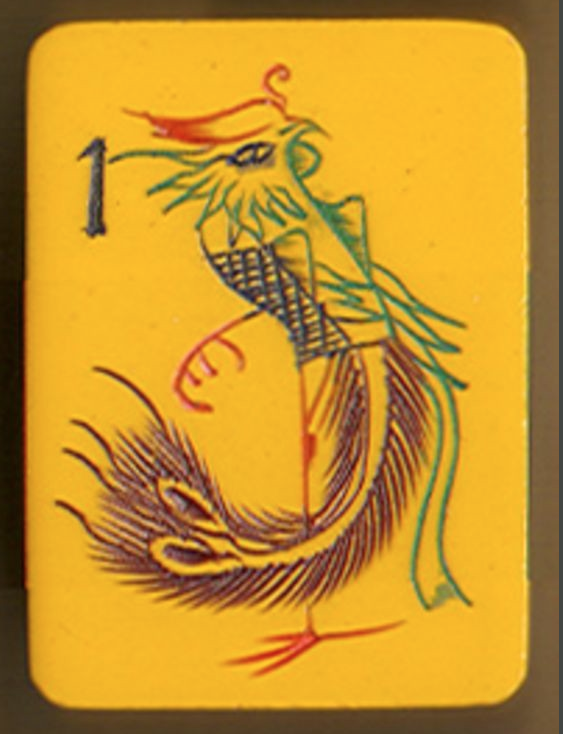
The two feathers reveals it to be a female. (It is from the personal collection of mahjongmahjong.)
Later on in time, during the Tang Dynasty the phoenix was depicted in flight, and by the Northern Song Dynasty (960-1126) it was shown rising in flight with legs tucked up.
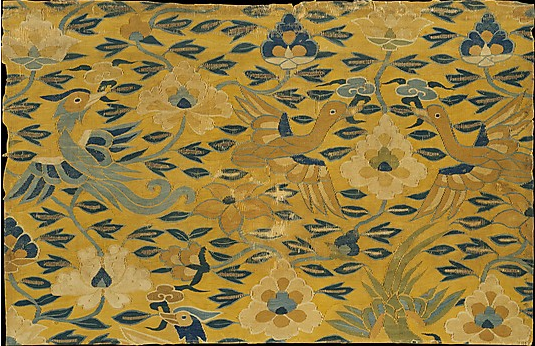
On the above lovely hanging dating from the Song Dynasty in the collection of the Metropolitan Museum of Art, we see the phoenix on the left; the two feathers indicate a female. Interestingly, the tail does not have the peacock-like look to them we normally see.
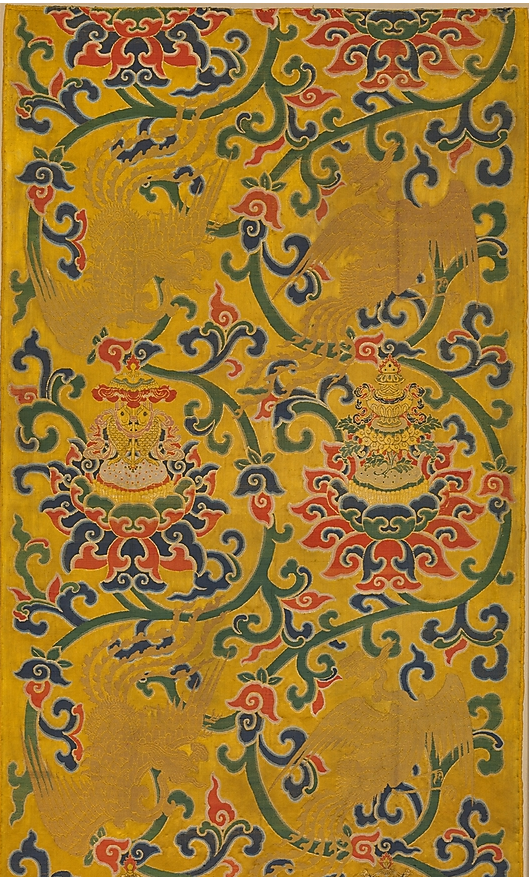
A bit later in time we see the above panel dating from the Ming Dynasty in the collection of the Metropolitan Museum of Art. The phoenix now looks a lot different, and its tail has the more ornate feathers we expect. Look carefully and you will see four phoenixes.
In yesterday's blog we discussed Five Bats which are symbolic of the Five Blessings: old age, wealth, health, love of virtue and a natural death, an image that frequently appears in Chinese art. The rare dish below was auctioned off at Sothebys. Five bats surround a stylized Shou in the center, and although hard to see the "cavetto," the part of the plate surrounding the center flat part, has three phoenixes. Note they only have two tail feathers, and thus are females.

Below is a version of a flying phoenix on a Mahjong tile
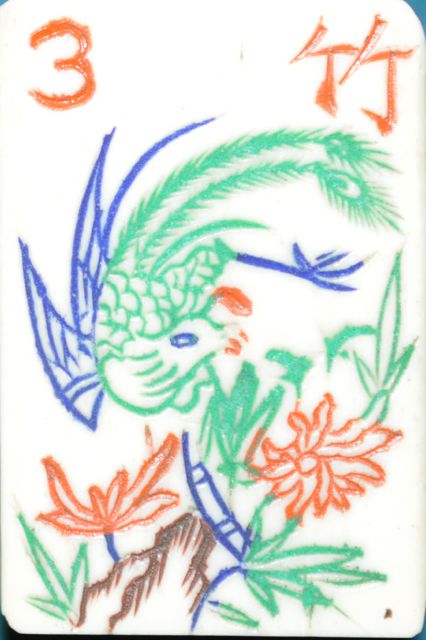
It is a female, and she looks it, doesn't she?
Below is the accompanying bird from the same set:
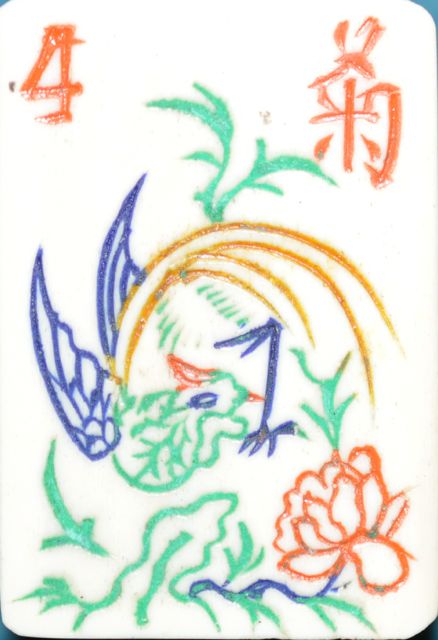
You can see the similarities to the phoenix, but it really is a pheasant, indicated by the feathers that don't resemble those of peacocks.
My book, written with Ann Israel, is coming out! To see about the book:
www.mahjonggtheartofthegame.com
to order the book:
http://www.barnesandnoble.com/w/mah-jongg-ann-israel/1118759459?ean=9784805313237
or
amazon.com/gp/product/4805313234/ref=s9_newr_gw_d33_g14_i1?pf_rd_m=ATVPDKIKX0DER&pf_rd_s=center-2&pf_rd_r=0VDFGYSYF35F849MH93Q&pf_rd_t=101&pf_rd_p=1688200382&pf_rd_i=507846
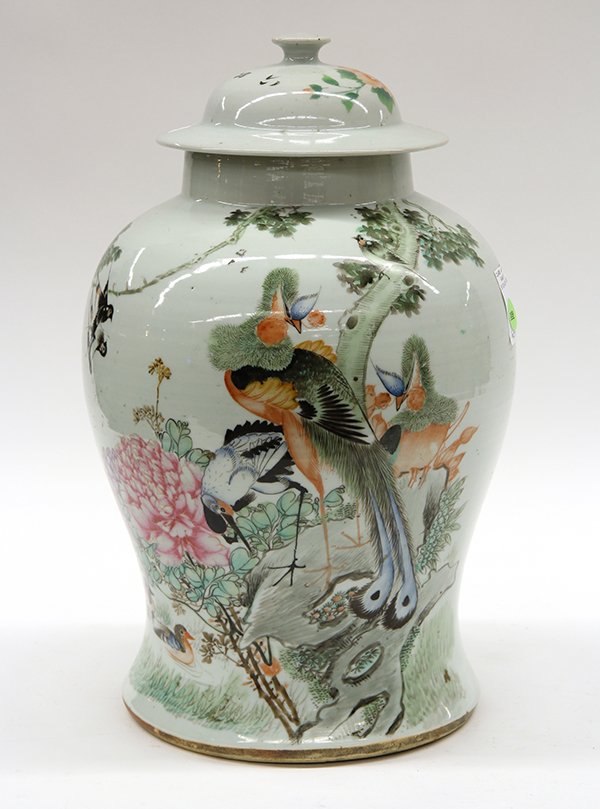 This lovely porcelain (from Clars Auction House dating from the Republic period) ) shows us a phoenix (actually there are a couple you can see, one is hidden on the far right) standing near a peony, a common theme on porcelains.
This lovely porcelain (from Clars Auction House dating from the Republic period) ) shows us a phoenix (actually there are a couple you can see, one is hidden on the far right) standing near a peony, a common theme on porcelains.
